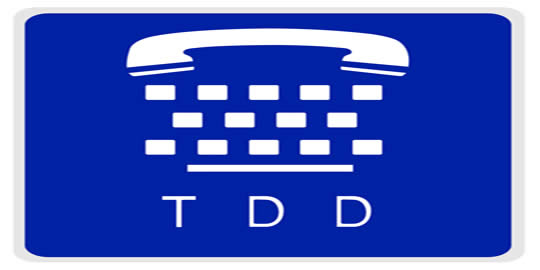Telecommunications Relay Service, also known as TRS, Relay Service, or IP-Relay, or Web-based relay services, is an operator service that allows people who are Deaf, Speech-disabled, Hard of hearing, or Deaf blind to place calls to standard telephone users via a keyboard or assistive device. This allows standard voice telephone users to talk to people who have difficulty hearing or speaking on the telephone. Converse Communications of Connecticut established the first relay service in 1974.
This is how the Telecommunications Relay Service (TRS) Works:
When you place a call through this telephone service, a communications assistant will speedily convert the words you say into typed words, so that the other party who has difficulty or hard of hearing on the phone can read your words. The other party can answer you verbally, or type a reply that a communications assistant reads to you. In order to communicate this way, the other party will need a phone used by persons with hearing and speech disabilities, called a TTY.
What is a TTY?
TTY stands for Text Telephone or sometimes called a TDD, or Telecommunication Device for the Deaf and is the more widely accepted term and not just for people who are deaf.
A TTY is a special device that lets people who are deaf, hard of hearing, or speech-impaired use the telephone to communicate, by letting them type messages back and forth to one another instead of talking and listening. A TTY is required at both ends of the talk in order to communicate.
To use a TTY, you set a telephone handset onto special acoustic cups built into the TTY (some TTY prototypes can be plugged directly into a telephone line). You can now type the message you want to send on the TTY’s keyboard. As you type, the message is sent over the phone line, just like your voice would be sent over the phone line if you spoke. You can read the other person’s answer on the TTY’s text display.
Who Uses the Relay Service?
- People who can hear and speak clearly can make or receive relay calls. Several businesses, government agencies, friends and families of persons with disabilities make and receive relay calls everyday and don’t need special equipment to use relay.
- People who can speak clearly but have difficulty hearing can place or receive calls through the relay service. Many people in this group are senior citizens. This type of relay call is Voice Carry Over (VCO) because the hard of hearing person’s voice is “carried over” to the other party. In this category, no typing is required, except by a communications assistant. All that the other party says is typed by a communications assistant and the words show as text on the VCO user’s TTY or VCO phone. That makes this type of relay call very easy to use.
- People who can hear clearly but have difficulty speaking on the phone can place or receive calls using the relay service. This type of relay call is Hearing Carry Over (HCO) because the person with a speech disability is able to “hear” the other party’s voice. HCO users can type what they want to say using a special telephone, called a TTY (text telephone). A communications assistant then reads their words to the party they are calling. Three-way calling is needed for a HCO call.
- People who communicate best with sign language. This option is great for people who use American Sign Language (ASL), which is different from written English. It is also best for people who cannot type on a TTY phone easily, such as children who are ASL users. Individuals who use sign language can make relay calls through communications assistants who can interpret their calls. The caller signs to the communications assistant with the use of video equipment, and the communications assistant voices what is signed to the called party. This type of relay service is called Video Relay Service, and all state TRS programs do not offer it.
- People whose speech is difficult to understand. No special telephone or device is needed for this option. A person with a speech disability talks to a communications assistant with special training in listening and understanding a variety of speech disorders. The communications assistant repeats all that has been said, making the caller’s words clear and understandable. This type of relay is called speech-to-speech relay services (STS).
A note to remember:
Never hang up! Some people hang up on relay calls because they think the communications assistant is a telemarketer selling products and services. If you answer the phone and hear, “Hello, this is the Relay Service. Have you received a relay call before?” — please don’t hang up. The call might be so important and you will miss the message.
Now that you know what a Telecommunication Relay Service and its uses, you are now ready to talk to a person who is hard-of-hearing, deaf, or has a speech disability on your phone!
Hire your virtual assistant from Virtual Assistant Talent and see the difference. We have all the services you are looking for and the best and experts in their field Virtual Assistants in town.
We are proud to be a Better Business Bureau Accredited Company (bbb.org).
Tags: telecommunication relay service, telephone relay service, Virtual Assistant Talent






